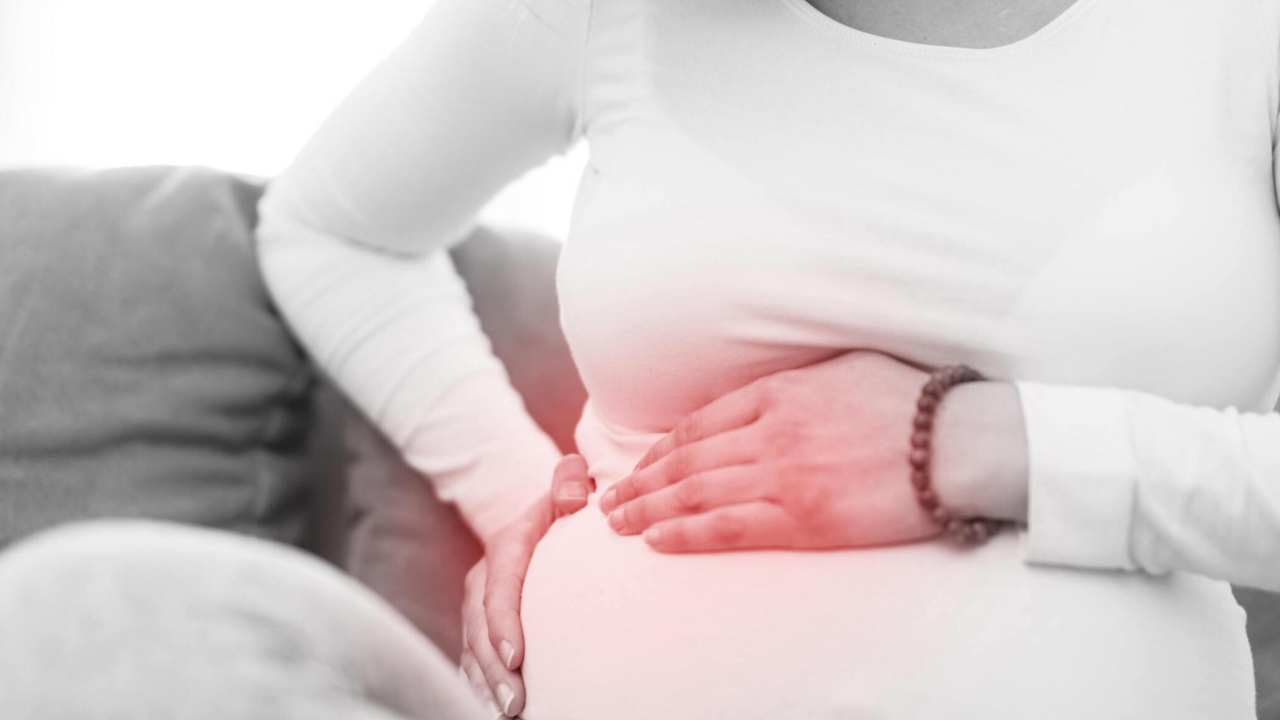Pregnancy Due Date Calculator





No other excitement is the same as taking a pregnancy test and finding out a positive result! Once you’ve processed that news, the first question that comes to your mind will undoubtedly be: when is my due date? Even though it’s true that most pregnancies last 40 weeks, there are many other factors that have to be taken into consideration while determining your due date.
We’re here to put a lid on your worries and help you determine your estimated due date with the pregnancy due date calculator.
Pregnancy Calculator: How Many Weeks Pregnant Am I?
The estimated date of delivery (EDD), commonly known as the due date, is the estimated date when labor is expected to begin. This date which can be determined using a pregnancy due date calculator is just an estimate and only 1 in 20 people delivers on their estimated due date. You’ll probably start labor sometime in the two weeks before and after your due date.
Gestational Age Vs Fetal Age
There are two ways to measure the age of a baby during pregnancy, namely:
- Gestational Age
- Fetal Age
Gestational age is used to track pregnancy and calculate a due date. It measures how far along your pregnancy is in weeks. On the other hand, fetal age is the actual age of the growing baby.
Gestation is the time between the date of conception and birth. It is measured from your last menstrual period (LMP) — the first day of your last period — to the current date in weeks.
How To Calculate The Due Date?
A due date calculator uses four methods to determine your expected due date:
- Due date by the last menstrual period
- Due date by conception date or ovulation
- Due date by IVF transfer date
- Due date by ultrasound scan
Due Date Calculator: Last Menstrual Period
The common length of pregnancy is 280 days or 9 months. In this method, the due date is calculated by adding 280 days to the first day of your last period.
Note: This assumption is for a regular 28-day cycle (cycles can vary from 20 to 45 days), and the menstrual period and ovulation are considered to be the first two weeks of pregnancy. This method is not 100 percent accurate, as it is affected by the regularity of your menstrual cycle.
We’ve gathered all the information about these advanced formulas which are used by a due date calculator to determine the closest to accurate results.
Naegele's Rule
- The standard method of calculating a due date for a pregnancy
- Due date= LMP + 280 days
- Considers a 28 days menstrual cycle to be 28 days with ovulation occurring around the 14th day of the cycle
- For a longer cycle, the estimated due date will be later
- For a shorter cycle, the estimated due date will be earlier
Mittendorf-Williams Rule
- More advanced than Naegele’s rule
- For first pregnancies, an average of 288 days from LMP
- In subsequent pregnancies, an average of 283 days from LMP
- Determine the first day of your last menstrual period.
- Count back 3 calendar months from that date.
- Add 15 days to that date if it’s your first pregnancy, or add 10 days for subsequent pregnancies
- For first pregnancies, due date= LMP – 3 months + 15 days
- For subsequent pregnancies, due date= LMP – 3 months + 10 days
Parikh's Rule
- Used for irregular cycles
- The expected date of delivery is calculated by adding 9 months to the last day of your menstrual cycle, subtracting 21 days, and then adding the duration of previous cycles.
- Due date= LMP + 280 days – 21 days + the length of previous cycles (or, the average cycle length)
- The risk of any potential errors related to calculating your expected due date is greatly reduced
Wood's Rule
- Considers the individual length of the menstrual cycle as well as the number of pregnancies
- Calculate your expected due date
- For first pregnancies, the expected due date= LMP + 12 months – (2 months and 14 days)
- For subsequent pregnancies, the expected due date= LMP + 12 months – (2 months and 18 days) = EDD
- Use the expected due date in the equation according to your cycle length
- For cycles longer than 28 days, due date= EDD + (actual length of cycle – 28 days)
- For cycles shorter than 28 days, due date= EDD – (28 days – the actual length of your cycle)
Pregnancy Calculator: Conception Date
With this calculation, 266 days of pregnancy are added to the date you conceived. But there’s a little. You might know the exact date you had sex. But the exact conception date isn’t always known. This is because it can be challenging to determine the exact date of ovulation. Sperm can live in the female body for up to 5 days, and the egg can live for 24 hours after it’s released from the ovary.
Therefore, the conception date can be several days after you’ve had unprotected intercourse.
What Is The Earliest I Can Test For Pregnancy?
One of the first indications of pregnancy is the absence of a menstrual period. To avoid disappointment, it is often advised against taking a pregnancy test until after you have missed your period.
Pregnancy Due Date Calculator: IVF Transfer Date
According to the Centers for Disease Control and Prevention (CDC), more than 250,000 assisted reproductive technology cycles are performed in the United States each year. This results in about 77,000 or more babies born a year.
If you are part of the growing tribe of IVF moms, you can use the IVF due date calculator to determine your expected due date.
The IVF due date calculator can determine your baby’s due date in two ways:
- When you ovulate—meaning your egg retrieval or intrauterine insemination (IUI) day. In case you’re undergoing IUI, your due date is 266 days (or 38 weeks) later.
- Whether you’re having a three- or five-day embryo transfer. For a three-day embryo, count forward 263 days from the transfer for your due date. For a five-day embryo, add 261 days to the transfer for your due date.
Pregnancy Due Date Calculator: IVF Transfer Date
According to the American Academy of Obstetricians and Gynecologists (ACOG), the most accurate method to establish gestational age is a first-trimester ultrasound. So if you can’t pinpoint when you conceived, forgot the day of your last period, or aren’t sure when ovulation occurred, you can determine your due date at your first prenatal appointment.
Your OB or midwife is most likely to schedule you for an ultrasound to confirm the pregnancy, during which, the technician or physician will measure the baby’s length, from crown to rump, to gauge how far along you are and calculate your due date. If the baby is much bigger or smaller than expected for the gestational age based on your LMP, your doctor will likely change your due date based on what they see on the first-trimester ultrasound.
Final Word On Pregnancy Due Date Calculator
The average pregnancy is calculated at 282 days (40 weeks) from the first day of your last period. But babies rarely keep to an exact timetable. So, a full-term pregnancy can be anywhere between 37 and 42 weeks. Our due date calculator will help you determine the closest to the accurate due date. So sit back and enjoy the pregnancy because you’re soon going to experience parenthood bliss!
FAQs
1. Can I plan my due date?
2. Can my due date change?
3. How likely am I to give birth on my due date?
4. How to calculate the due date?
Recent Articles


What is Acute Fatty Liver Of Pregnancy? Symptoms, Diagnosis, Treatment
If you are curious about Acute Fatty Liver of Pregnancy, we have a detailed article on this subject. Here, we have mentioned the symptoms, diagnosis, and the treatment.


A Complete Guide on How to Prepare Your Body for Pregnancy
Know tips and advices on how to prepare your body for pregnancy, including lifestyle changes, nutrition, exercise, and more.


The Magic to Induce Natural Labor: How Does The Midwives Brew Work?
A Midwives brew is one of the natural ways to induce labor. In this article, we will chat about what midwives brew is and everything about it. Read on to find out.


Hip Pain During Pregnancy And Treatment for it
What is hip pain during pregnancy? Most of the Women Face Hip pain during Pregnancy. What are the Causes, Preventions and Treatment.


Cholestasis of Pregnancy: A Complete Guide
Intrahepatic Cholestasis of Pregnancy (ICP) is a condition where the normal flow of bile acid is affected by the high levels of pregnancy hormones.


Faint Line On Early Pregnancy Test: Everything You Need To Know
A faint line on pregnancy test may leave you wondering whether you’re pregnant or not. A faint positive line is common and could mean a lot of things.



